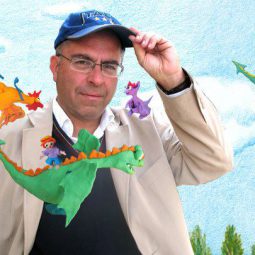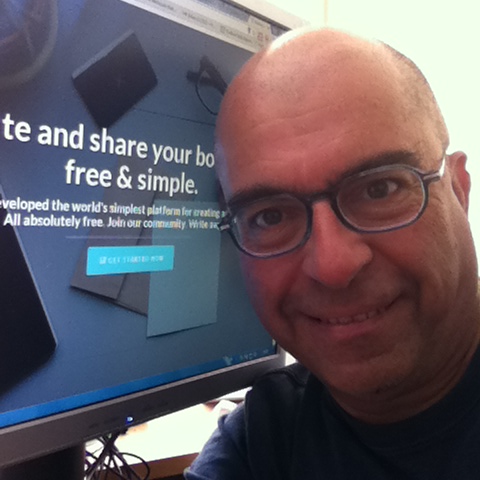
My name is Mel Rosenberg. I’m a scientist, inventor, lecturer, musician, writer and a few other things.
I was born in Winnipeg in 1951, first child of Faigel (nee Gorelick) and Harry Benjamin Rosenberg, both deceased (Mom died eleven years ago, Dad five years ago).
They named me Melvyn (they liked Melvyn Douglas and Melvyn Fenson, so they said). My name in Hebrew was Elimelech אלימלך, so as a young child they called me “Mailech”.
From left: Mom,Dad (left) and little Melvyn
I’m the eldest of four – Rena Lebkovich (top right), Miriam Duanis (bottom right), and David A. Rosenberg (bottom left).
In 1953 we moved to Ottawa, Canada, and I lived there till I was almost 18.
I attended Hillel Academy, a Hebrew day school, from 1956-64. Some of my classmates at Hillel became extremely prominent adults, David Weitz, Jackie Lightstone and the late Rabbi Yechiel Eckstein, just to name a couple. We studied half days general studies and half days Hebrew and religion. The whole class skipped grade four. Makes you wonder how much they learned in the public schools.
I subsequently attended Hillcrest High School in Ottawa from 1964-69. It was a wonderful high school, full of inspiring teachers. Ken Crouch, E.W. Benoit, Mr. Trudel, Mr. Seasons and many more. I owe them a lot. I’m in touch with several of my schoolmates, Fred Barber, Douglas Bradley and more. I often wonder what happened to Ernie Jackson, Graeme Gardner, Ken Little and several others.
After high school, I came to Israel for a year on the Habonim Workshop program. We spent much of our time on Kibbutz Urim, where I worked picking and sorting fruit, taking care of trees. I even drove a tractor (until the unfortunate day I lost control and a ton of citrus fruit overturned. Oh, and two days with the honey bees when I was stung umpteen times and resigned forthwith.

I spent the next three years (1970-73) in Jerusalem, studying towards a B.A. in chemistry and biochemistry. My high school teacher at Hillcrest, Mr. Trudel, taught us to love chemistry, but the professors at Hebrew University taught me to dislike it.
I was a borderline student and barely got my degree. They must have been happy to see me go. In second year I had blown up a laboratory (carelessly letting a block of elemental sodium fall into a pot of water). It did however generate one of my first poems:
Thoughts on Almost Exploding
Now I know –
Sodium and H2O
Don’t go.
I found an academic home at Tel Aviv University. I performed my M.Sc. studies (1973-5) with the late Prof. Ilan Friedberg. He taught me to run experiments, and to be somewhat organized. Our original plan (to measure phosphate uptake in membrane vesicles of the bacterium Micrococcus lysodeikticus) didn’t work. The assay was lacking ATP, but we didn’t find out until long after we had abandoned the project.

I ended up studying how the phosphate-starved microbes ‘go nuts’ when phosphate is added. I kind of discovered respiratory control in bacteria. We published the study in 1984, but the only scientist who cited the paper was me. Sic transit gloria Melvyn
.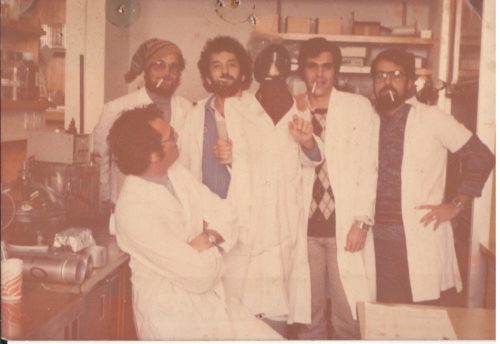
One of my electives as a graduate student was a course in jazz with Prof. Zvi Keren in the music academy. It was marvellous. I was already in love with jazz. I took the course twice, telling the students that I had failed the first time round.
Back at the Life Science faculty, they initially refused to accept a course in music as part of my studies. I fought. I prevailed. I’m stubborn.
My master’s was not a huge success, but compared to my undergraduate fiasco, it was. Yet I still hadn’t decided on a scientific career. I got a job at Kley Zemer, a music store, and sold pianos for almost a year. Truth be told, I loved it. During that period I fell in love with Shuli Sapir, courted her successfully. We were married on July 4th, 1976 and still are!
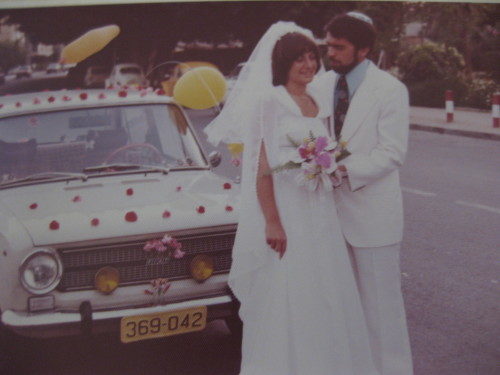
From 1976-8 I was drafted to the Israeli army. I served several non-descript functions. I almost did something amazing and potentially life-altering. But in the end I didn’t. So my life wasn’t altered. And anyway I can’t write about it.
After my stint in the army, I deliberated. Should I do my Ph.D. in education? Microbiology? I even considered working with a tire company. My heart was with selling pianos, and I was offered to run a whole store. But my wife and late Mother intervened. “Get your Ph.D. and then sell pianos,” they told me. I listened.
Eugene Rosenberg was a prominent professor in Microbiology and I had taken his inspiring course in Advanced Microbiology as an M.Sc. student. After several false starts (more about that another time) I began my Ph.D. studies in 1978 under Eugene and his collaborator of those years, David Gutnick. I liked Dave too. He played a mean flute. People assumed that Eugene and I were related. I began to call him “the uncle”. That probably helped in those difficult years. I never did explicitly say that he was “my uncle”.

I was a mediocre student in Eugene’s laboratory, until I made a chance discovery in December, 1979. That led us to propose a simple method to study the (hydrophobic) surface properties of bacteria and other microorganisms.
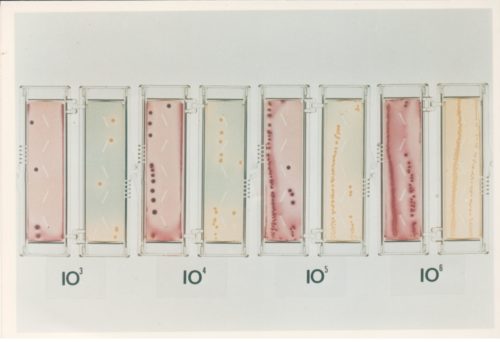
We published the paper in the fall of 1980. It became a very highly-cited article and the technique is still used over forty years later. It paved the way for much of my ensuing scientific career. I didn’t go back to selling pianos, although I did cut out from the lab on occasion to fill in for one of the employees there who was away. I still love helping people buy pianos.
By the time I finished my Ph.D. in 1982 I had published a bunch of published papers, and got a tenure-track position as a microbiologist at the Dental School of Tel Aviv University. There was no laboratory. Eugene and others allowed me to work in their laboratories and I persevered. My plan was to succeed there and then find a position within an established microbiology department.
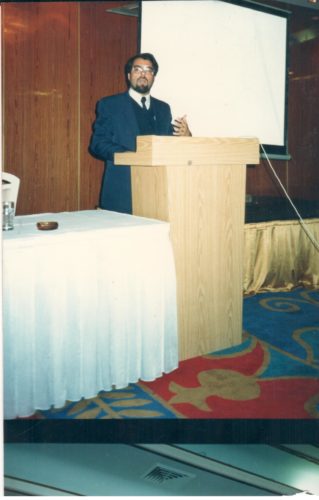
That didn’t happen. I stayed with the Dental School for the next two decades, surrounded by dentists. A few of them were nice.
My main collaborator during those first few years was Prof. Ervin A. Weiss. Our first invention together became a product (the QuadLoop). We published papers and began to work on a novel two phase oil:water mouthwash.
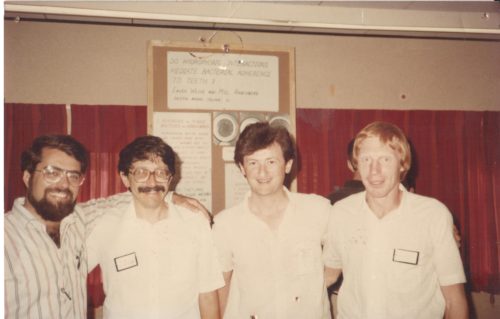

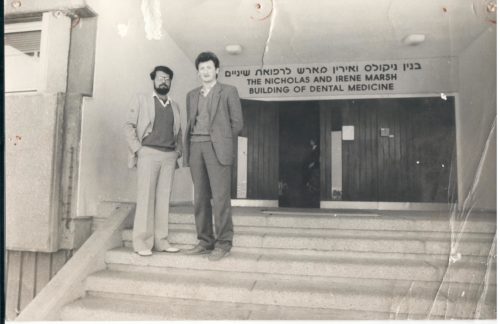
We showed the prototype to a local pharmaceutical company (Teva). They asked us whether it prevented bad breath (halitosis). We didn’t know. I started reading the literature on the subject and discovered that few scientists were working on the subject, worldwide. On the other hand, who wants to spend their career smelling people’s mouths?

Well, me for one. I remember telling my wife that I had found my ‘hook’, my scientific future. Bad Breath research? So what if it was smelly, odd, and strange? People would laugh at me, of course (including my superiors at the university). But I persisted. I am stubborn.
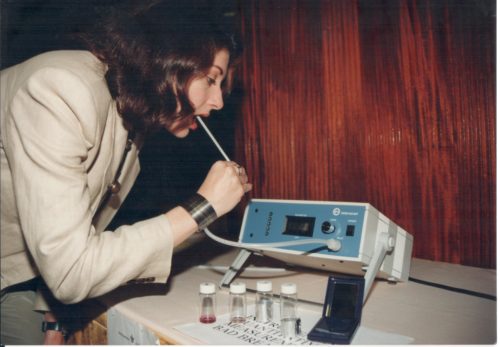
I became an expert on bad breath (not that there were that many). Together with Jacob Gabbay, we co-opted an industrial sulphide sensor and put it to work to measure oral emissions. Together with Daniel van Steenberghe we established a society for researchers on the subject, published text books and organized meetings. Together with Ilana Eli and others, we published papers on how people smell each other and themselves.
We studied the microbiology of bad breath, and together with students, including Sarit Goldberg and Nir Sterer, came up with a few new directions.
Individuals came to see me with their odor problems. We ran clinical studies. I must have smelled between 5,000 and 10,000 people.
The original iterations of the two-phase mouthwash were not successful. It turned out that a certain concentration of a molecule that was supposed to interfere with the activity of the moutwash (CPC), actually enhanced its activity. This was actually the missing key to its success. This discovery followed a vociferous argument on the subject with Dr. Yoel Konis. This was probably the most productive argument of my professional career! It took another five years until the first product was launched in Israel (“Assuta”) and ten years till it started to succeed in the UK (“Dentyl pH”, now “Dentyl Active”).

The mouthwash succeeded beyond our wildest dreams. I’m guessing that there was a time when 10 million bottles a year were being sold in the UK. It reached about 20% of the market there, and was sold in many other countries. Just a few years before the US patent came out, the licensee in North America (Atlas) sold it to Colgate. So for the past few years, the mouthwash has been available in the US as well – a dream come true!
I invented many other things, most of which didn’t succeed too well. Mr. Yamakawa in Japan imported several of our anti-odor products. Unfortunately he passed away.

In my forties, I took up sax playing and produced two jazz albums. Our first band, the “Dental Jazz” started at the Dental School.
Ten years ago I returned to piano and learned how to accompany myself when I sing (saves money, too).
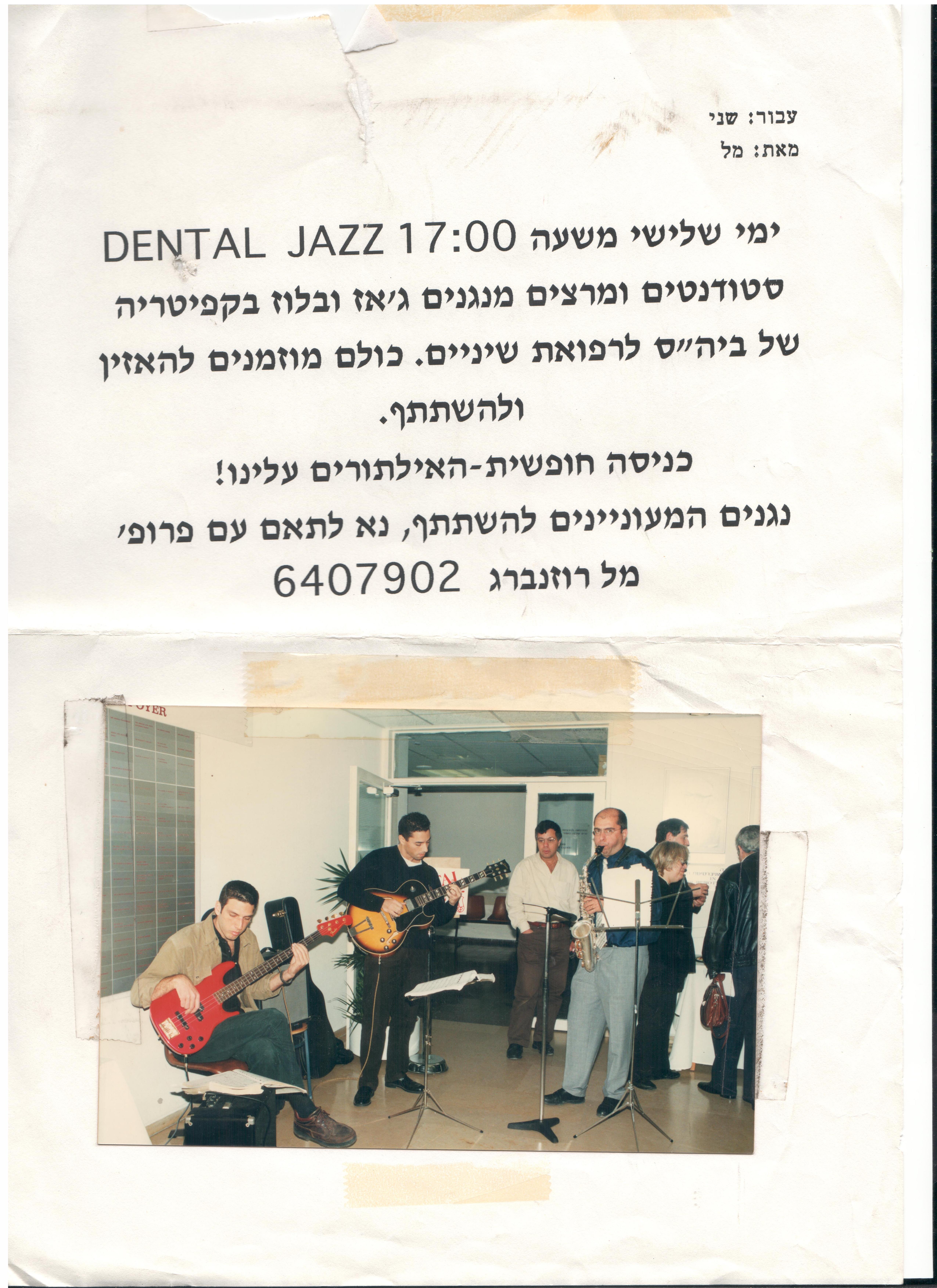
I also began writing children’s books. Oodles of children’s books. So many that we created an online platform, www.ourboox.com to allow everyone to create and share their books for free. We now have over 200,000 books! Some of my best ones are here.
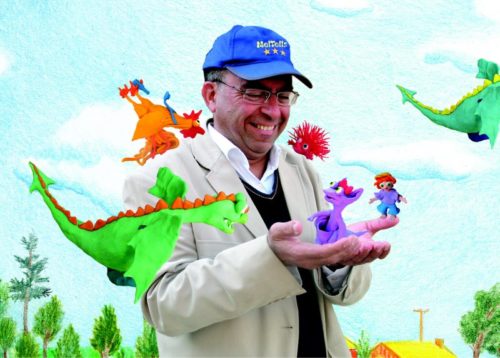
Photo: Rotem Omri
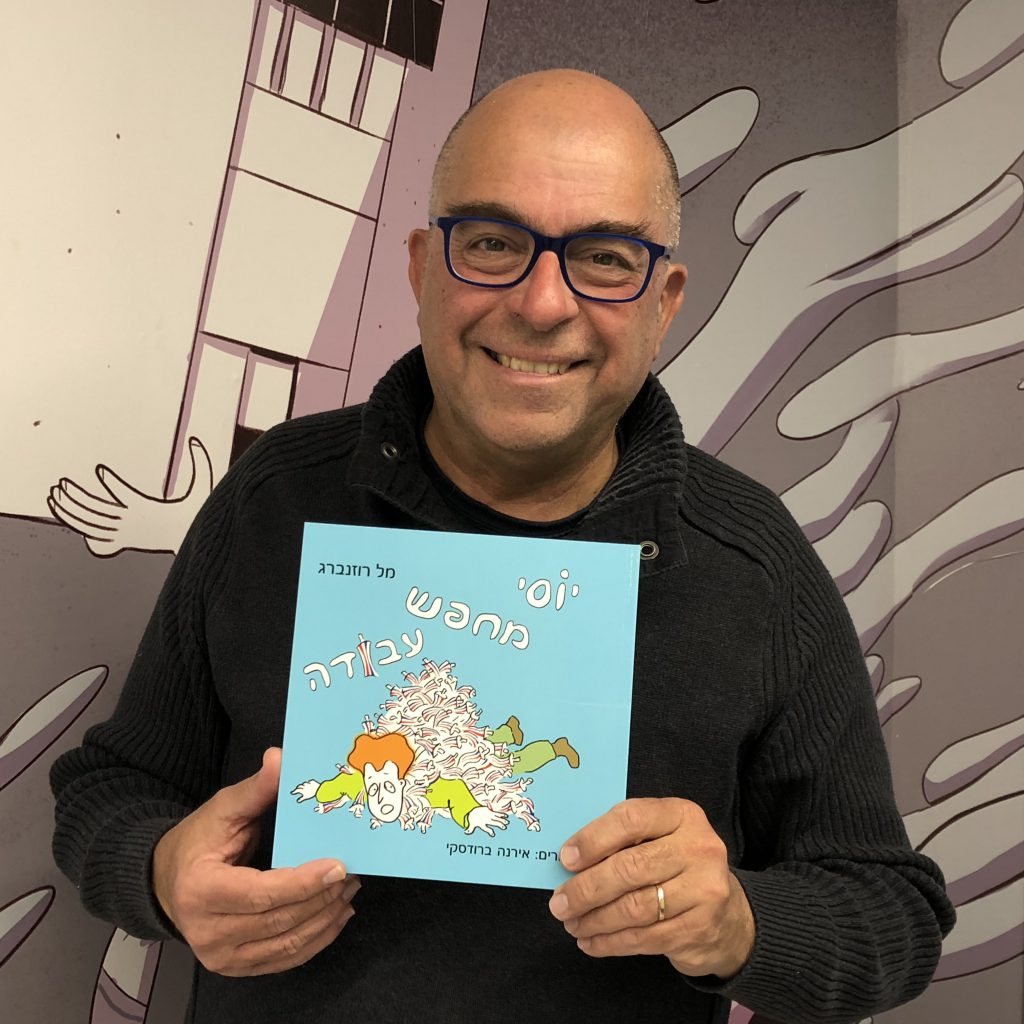
Twelve years ago I managed to negotiate an early retirement as a scientist at Tel Aviv University. I thought that Israeli colleges would be receptive to my ideas about teaching in the modern age. I was wrong. But I’m still trying.
I currently teach academic courses on creativity, personal skills and popular music and continue to be inspired on a daily basis. I have a great family. What 70 year-old could ask for anything more?
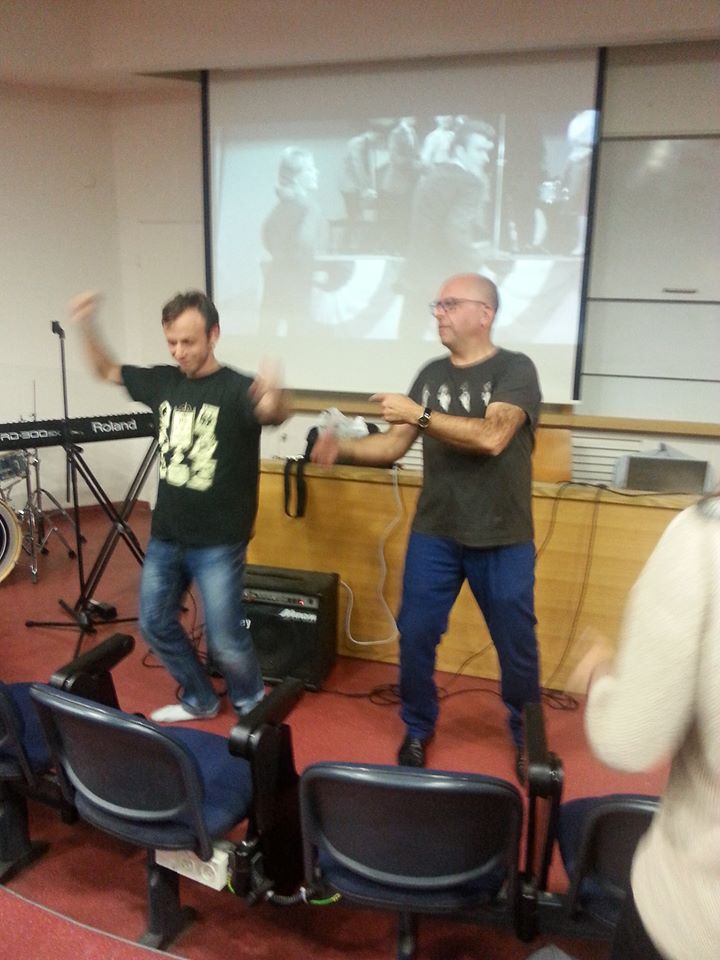

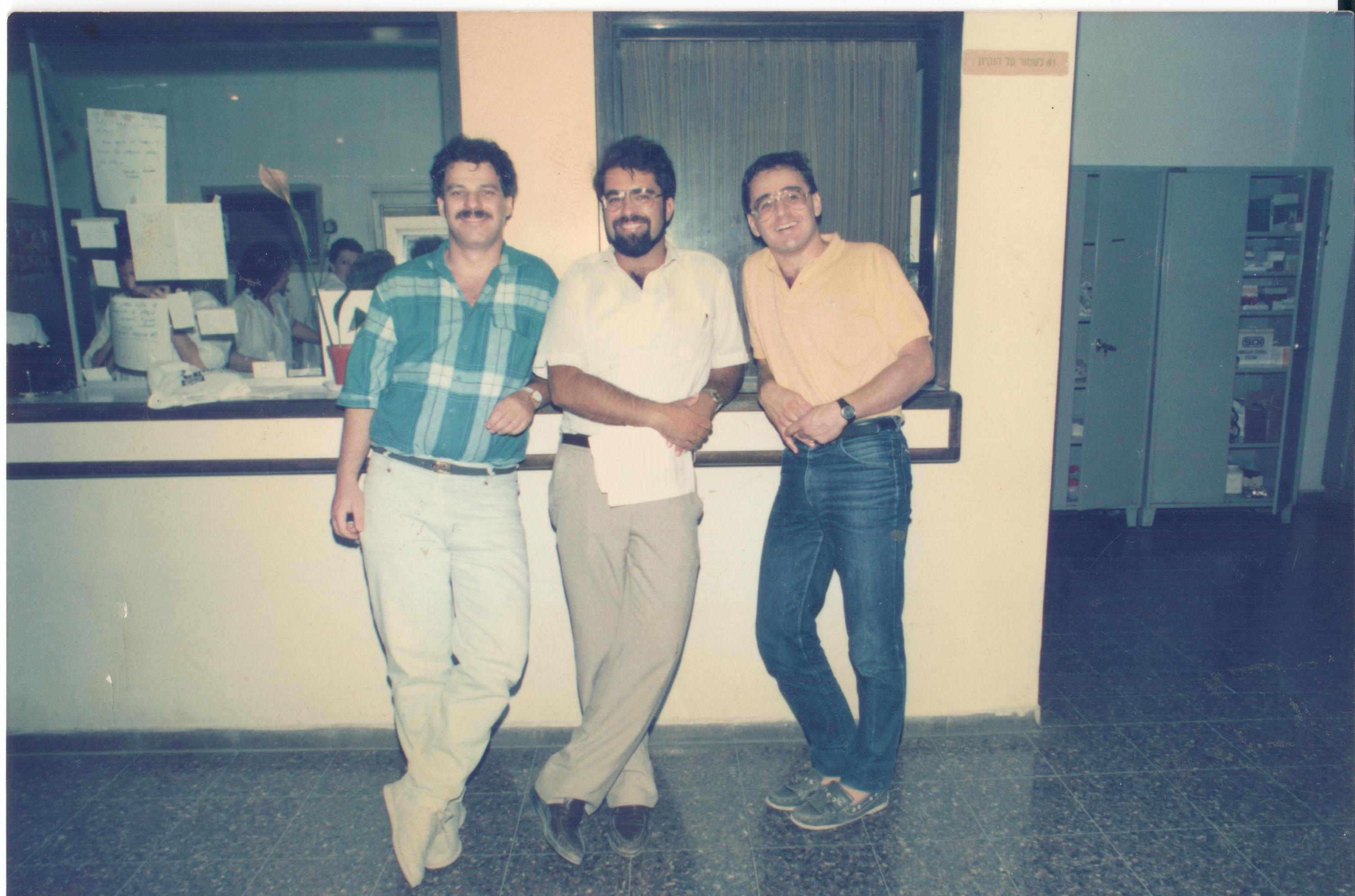
Published: Oct 23, 2016
Latest Revision: Sep 22, 2022
Ourboox Unique Identifier: OB-191338
Copyright © 2016








